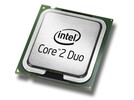Intel Core i3-1125G4 vs Intel Core 2 Duo T8300 vs Intel Core 2 Duo T9600
Intel Core i3-1125G4
► remove from comparison
Der Intel Core i3-1125G4 ist ein sparsamer Quad-Core-SoC für Notebooks und Ultrabooks, der auf der Tiger-Lake-Architektur basiert und im September 2020 vorgestellt wurde. Tiger Lake wird im verbesserten 10nm+-Verfahren (SuperFin genannt) bei Intel gefertigt und nutzt die neuen Willow Cove CPU-Kerne mit einer neuen Mikroarchitektur. Der Intel Core i5-1125G4 bietet vier Kerne mit 2 GHz Basistakt und 3,7 GHz Turbo-Takt (3,3 GHz wenn alle Kerne genutzt werden).
Eine weitere Neuerung ist die integrierte Intel UHD Graphics Xe G4 Grafikkarte (Gen 12) welche eine deutlich höhere Leistung wie die alte Iris Plus G7 in Ice Lake bieten soll. Im 1125G7 bietet die UHD Graphics jedoch nur 48 der 96 EUs bei einem Takt von 400 - 1250 MHz.
Wie bisher wird auch weiterhin WLAN (Wifi 6) und nun auch Thunderbolt 4 / USB 4 und 4 Lanes PCIe 4 im Chip (teil-)integriert für schnellere, günstige und platzsparende Implementierungen in Notebooks.
Der TDP kann bei den UP3 CPUs von 12 - 28 Watt gewählt werden und dadurch eignet sich die CPU auch für dünne und leichte Notebooks.
Intel Core 2 Duo T8300
► remove from comparisonDer Intel Core 2 Duo T8300 war zur Zeit der Erscheinung ein schneller Doppelkernprozessor basierend auf den Penryn Kern. Er bietet jedoch nur 3MB Level 2 Cache.
Intel Core 2 Duo T9600
► remove from comparison
Die Intel Core 2 Duo T9600 Dual-Core CPU ist ein High-End Dual-Core Prozessor für Notebooks. Die Architektur des Prozessors basiert auf den Penryn Kern und wird in 45nm gefertigt. Im Vergleich zum schnelleren T9900 unterstützt er jedoch noch nicht den C1E State. Der neuere Core 2 Duo P9700 bietet die selben Leistungsdaten, jedoch bei deutlich geringerem Stromverbrauch (28 W versus 35 Watt TDP).
Dank der relativ hohen Taktung von 2.8 GHz, ist die Performance für die alle Spiele in 2009 ausreichend (nur GTA 4 profitiert deutlich von mehr Prozessorkernen). Die alten Core 2 Quad Mobilprozessoren (Q9000, QX9300) werden dank der hohen Taktung bei den meisten Spielen geschlagen (da Spiele aus 2009 meist nicht mehr als 2 Kerne auslasten).
Der Penryn (Montevina Update) Kern bietet 2 Integer Units, 1 Floating Point Unit, 1 Load Unit und 1 Store Unit in einer 14-stufigen Pipeline. Mit der Wide Dynamic Execution Technologie kann der Kern bis zu vier volle Instruktionen gleichzeitig ausführen.
Dank Dynamic Acceleration (später Turbo Modus genannt), kann sich ein Kern um eine Stufe übertakten, wenn der zweite im Idle Modus (Leerlauf) ist.
Das integrierte Enhanced Speedstep kann die Taktfrequenz des Prozessors dynamisch an die Leistungsanforderungen anpassen. Dadurch läuft die CPU ohne Last nur mit 800 MHz.
Der Core 2 Duo T9900 passt in den Socket P (mit 479 Pins):
Socket P / Micro Flip-Chip Pin Grid Array (Micro-FCPGA) requires 479-pin surface mount Zero Insertion Force (ZIF) socket (mPGA479M socket) or Micro Flip-Chip Ball Grid Array (Micro-FCBGA) for surface mount (479-ball)
| Model | Intel Core i3-1125G4 | Intel Core 2 Duo T8300 | Intel Core 2 Duo T9600 | ||||||||||||||||||||||||||||||||
| Codename | Tiger Lake-UP3 | Penryn | Penryn | ||||||||||||||||||||||||||||||||
| Series | Intel Tiger Lake | Intel Core 2 Duo | Intel Core 2 Duo | ||||||||||||||||||||||||||||||||
| Serie: Core 2 Duo Penryn |
| ||||||||||||||||||||||||||||||||||
| Clock | 2000 - 3700 MHz | 2400 MHz | 2800 MHz | ||||||||||||||||||||||||||||||||
| L1 Cache | 320 KB | ||||||||||||||||||||||||||||||||||
| L2 Cache | 5 MB | 3 MB | 6 MB | ||||||||||||||||||||||||||||||||
| L3 Cache | 8 MB | ||||||||||||||||||||||||||||||||||
| Cores / Threads | 4 / 8 | 2 / 2 | 2 / 2 | ||||||||||||||||||||||||||||||||
| TDP | 28 Watt | 35 Watt | 35 Watt | ||||||||||||||||||||||||||||||||
| Technology | 10 nm | 45 nm | 45 nm | ||||||||||||||||||||||||||||||||
| max. Temp. | 100 °C | 105 °C | 105 °C | ||||||||||||||||||||||||||||||||
| Socket | BGA1449 | BGA479, PGA478 | Socket P (BGA479, PGA478) | ||||||||||||||||||||||||||||||||
| Features | DDR4-3200/LPDDR4x-3733 RAM, PCIe 4, 4 GT/s bus, DL Boost, GNA, MMX, SSE, SSE2, SSE3, SSSE3, SSE4.1, SSE4.2, AVX, AVX2, AVX-512, BMI2, ABM, FMA, ADX, VMX, SMX, SMEP, SMAP, EIST, TM1, TM2, Hyper-Threading, Turbo, SST, AES-NI, RDRAND, RDSEED, SHA, TME | Virtualization (VT-x), Intel 64, Idle States, Enhanced Speedstep, Execute Disable Bit | |||||||||||||||||||||||||||||||||
| iGPU | Intel UHD Graphics Xe G4 48EUs (400 - 1250 MHz) | ||||||||||||||||||||||||||||||||||
| Architecture | x86 | x86 | x86 | ||||||||||||||||||||||||||||||||
| Announced | |||||||||||||||||||||||||||||||||||
| Manufacturer | ark.intel.com | ark.intel.com | ark.intel.com | ||||||||||||||||||||||||||||||||
| FSB | 800 | 1066 | |||||||||||||||||||||||||||||||||
| Transistors | 410 Million | 410 Million | |||||||||||||||||||||||||||||||||
| Voltage | 1-1.25V V | 1.05-1.2125 V V | |||||||||||||||||||||||||||||||||
| Die Size | 107 mm2 | 107 mm2 | |||||||||||||||||||||||||||||||||
| $241 U.S. | $316 U.S. |
Benchmarks
Average Benchmarks Intel Core i3-1125G4 → 0% n=0
Average Benchmarks Intel Core 2 Duo T8300 → 0% n=0
Average Benchmarks Intel Core 2 Duo T9600 → 0% n=0
* Smaller numbers mean a higher performance
1 This benchmark is not used for the average calculation













